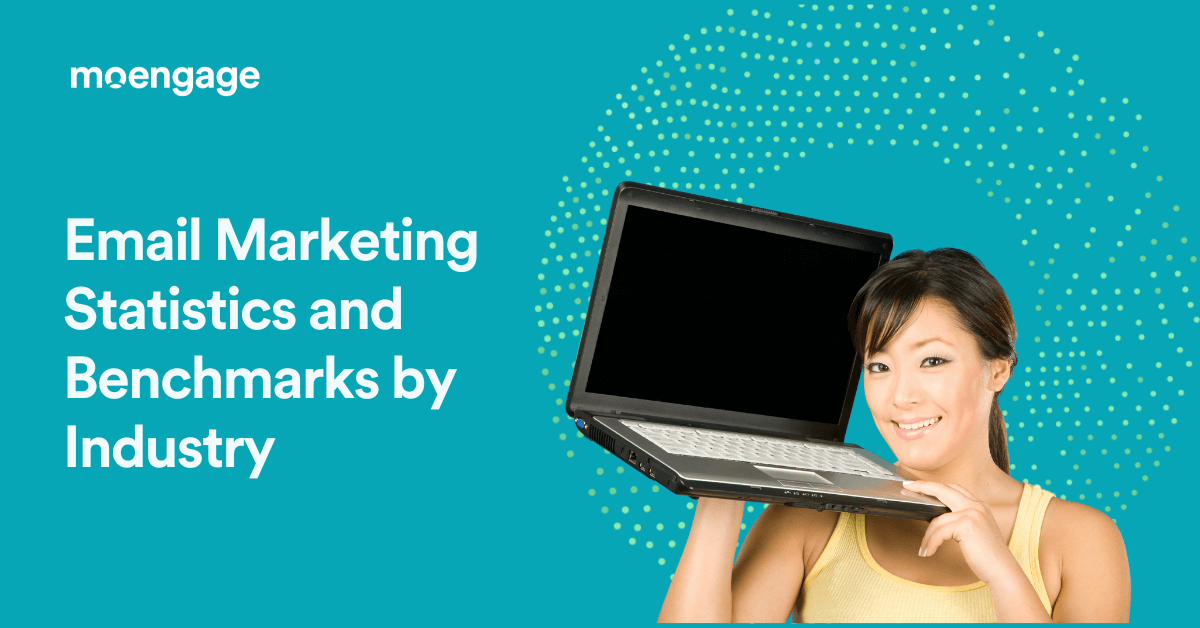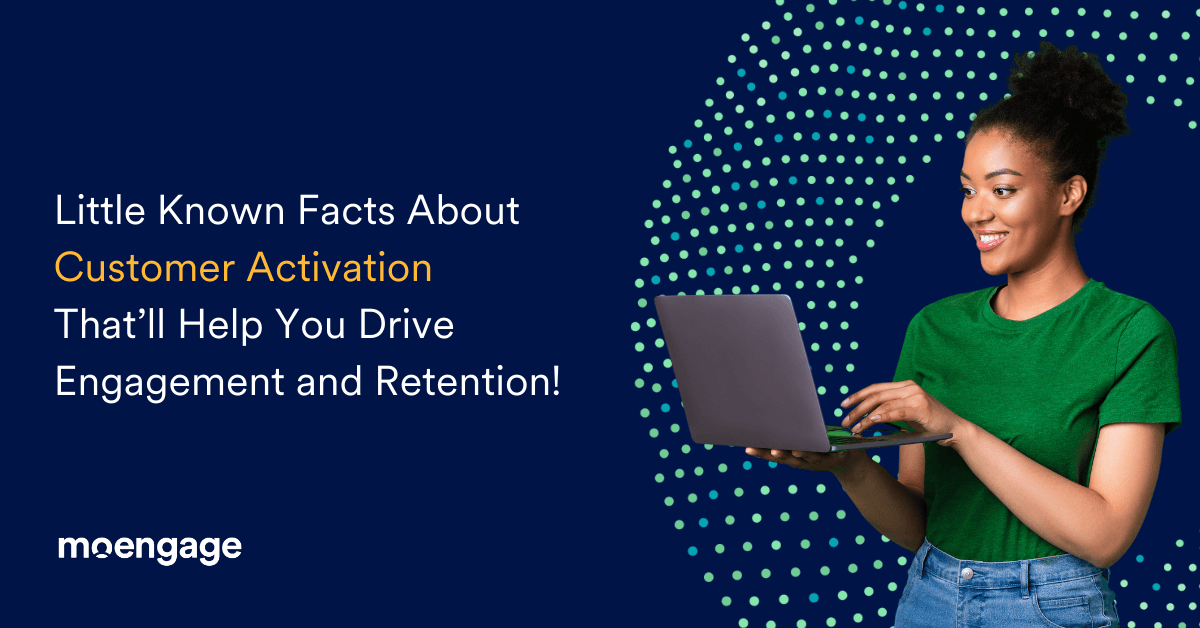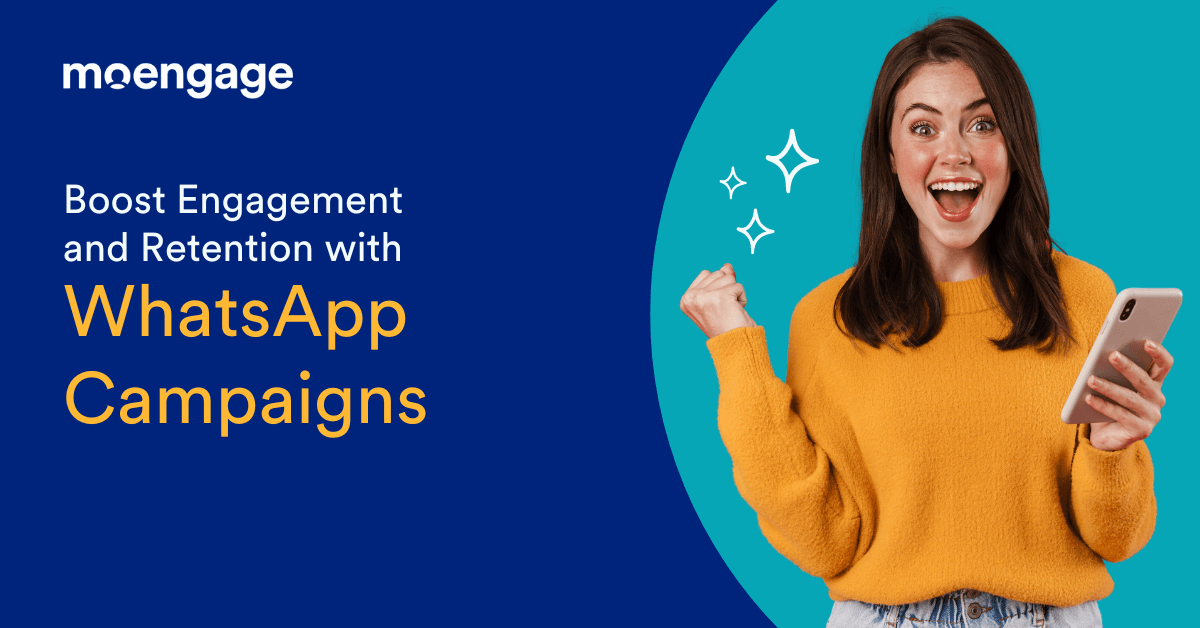Email Marketing Guide: Everything You Need to Know
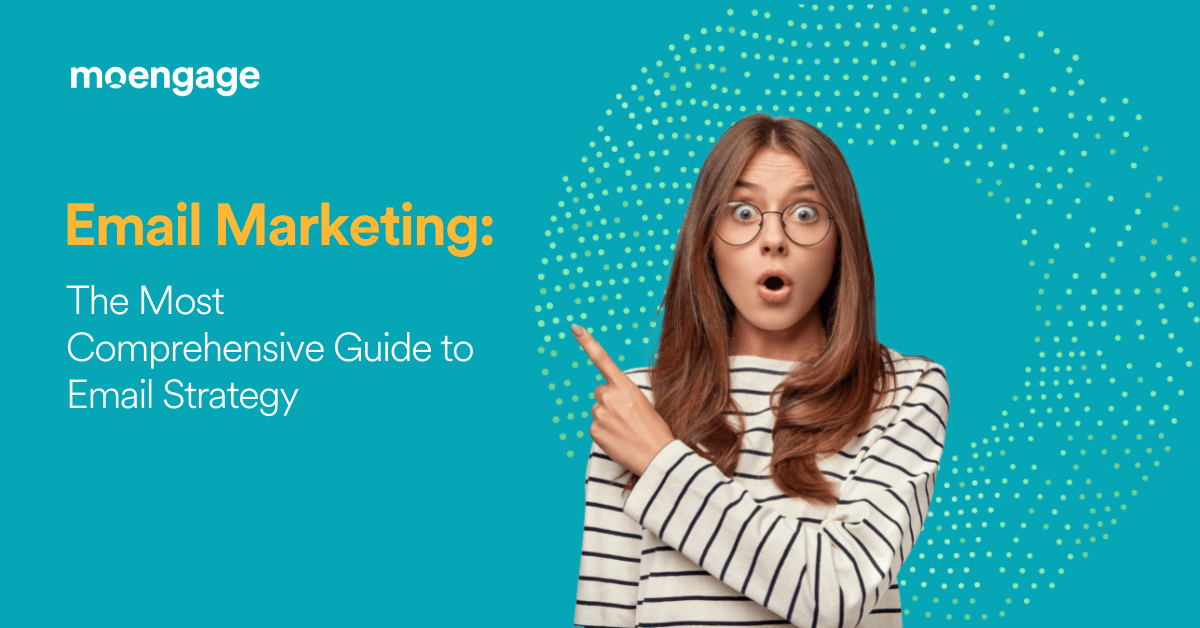
In earlier times, when commerce and trade constituted exchanging of commodities, marketing was plainly unidimensional for all intents and purposes. As times changed and civilizations flourished, marketing inevitably sprouted branches, with traders and business entities adopting or even creating models as per their marketing objectives.
While some sold directly to the customer (D2C), some did business with them (B2C), and some others did business with each other (B2B).
It’s fair to say that marketing, in general, has seen a sea change since the days of the barter system. However, the vast dichotomy between the present day and the ways of the old is owed to one marketer who would not only change how marketing was conducted but also be labeled the “Father of Spam” in the process.
On a hot Monday afternoon in the May of 1978, Gary Thuerk, the Marketing Manager of Digital Equipment Corp, sent out the first commercial, unsolicited mass email to market his company’s new product, inadvertently giving birth to email marketing.
In today’s digital era, brands are inundated with mass emails and email marketing campaigns by brands trying to identify and interact with their customers.
And while some of these campaigns still feel like spam, email marketing has established itself as the marketing strategy for lead generation and conversion. Email marketing’s prominence is so pronounced over other marketing channels that it is the preferred choice of 87% of B2B marketers who consider it the best organic distribution channel.
The trust of these marketers is not misplaced either, with email marketing having been known to generate the highest overall ROI at 4000% of the initial investment.
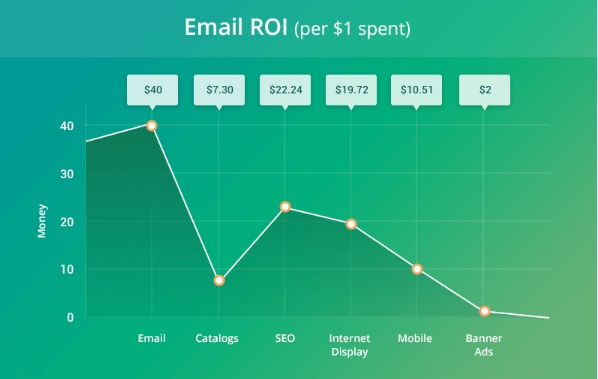
|
Email marketing helps you reach out to your customer base and connect with them to advertise your products/services and increase sales. For this reason, it is preferred by 86% of businesses over other marketing communication channels.
All of this attests to the power of email marketing to help companies to achieve better engagement. Better engagement of prospects means more of them are qualified better, leading to higher conversions and increased revenue.
So, in this ultimate email marketing guide, we’ll take you through the ins and outs of a successful email marketing program.
But first thing’s first – what is email marketing, and does it really work?
What Is Email Marketing and Does It Work?
Wikipedia defines email marketing as “sending a commercial message, typically to a group of consumers, using email. In its broadest sense, every email sent to a potential or current customer could be considered email marketing.” Thus, email marketing is sending emails to prospects to convert them into customers, turning existing customers into loyal, repeat buyers.
According to Gartner, email marketing is a staple for marketers because of its measurability, effectiveness, measurability, and customer attention it yields.
Data shows that as many as 85% of adult internet customers are still on email, way ahead of search engines at 70% and social media at 63%. Building and running an email marketing campaign is intrinsic to a brand’s success today. The only problem is that most consumers don’t know how to do it right.
For that reason, we have created this guide for marketers looking to commit to email marketing. In this guide, we’ll learn:
- How to create an email list of customers
- How to optimize emails for high clickthrough and open rates
- How to automate the process of rearing leads and converting them into customers
How to Get Started With Email Marketing
Email marketing consists of numerous dynamic elements; however, that doesn’t mean it’s complicated. To begin with, you have to focus on the following:
- Building and growing your email list
- Choosing an email service provider
1. Building and Growing Your Email List
To build an email list, the first step you should take is to create a sign-up form on your website. Consumers who visit your website and like your offerings will want a way to stay informed. You can also create a form for newsletter signups and deploy it through a pop-up to gather customer information, such as the email address of your customers.
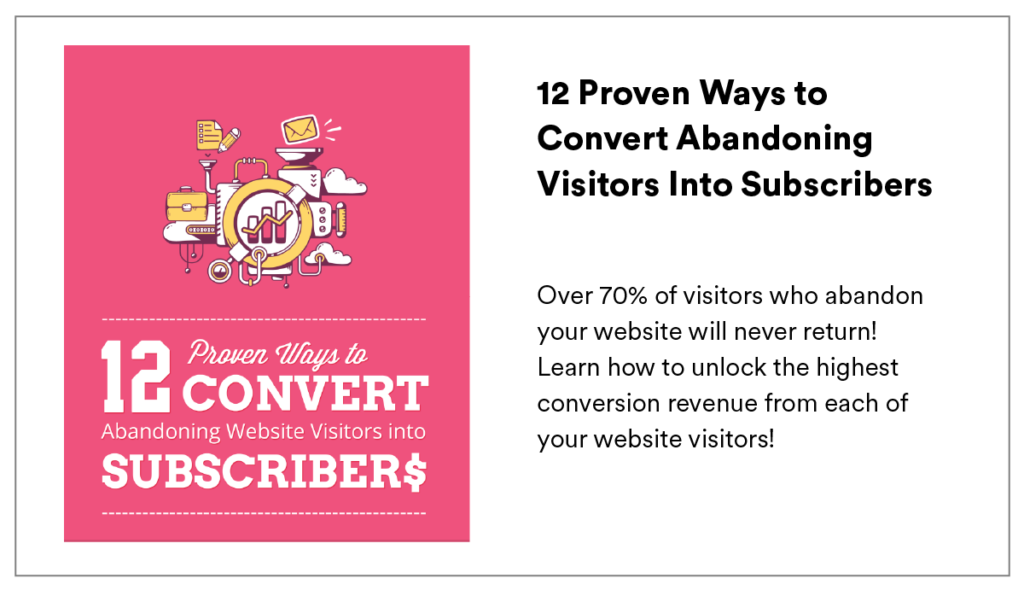
|
Once you have started building your email list, there is only so much you can do before new signups go stagnant. If you still want to grow your list, you will have to attract consumers with a lead magnet. A lead magnet is a free resource, such as PDF(s), whitepapers, or case studies, that you give away in exchange for the customer’s email address. OptinMonster is an excellent example of this. It offers a free PDF to customers by using it as a lead magnet in exchange for their email addresses.
2. Choosing an Email Service Provider
Your email service provider is the foundation for your email advertising program. Creating campaigns, triggers, and analyzing email performance would be impossible without a dedicated ESP.
To understand which ESP you should go for, gather a list of your must-haves and nice-to-haves before conducting an ESP review to ensure that your choice supports the minimum viability according to your marketing needs. When reviewing an ESP, look for the following features:
- subscription forms and email builder
- inbuilt email templates
- segmentation and personalization features
- analytics and reports
- triggered emails
- integrations
- open API
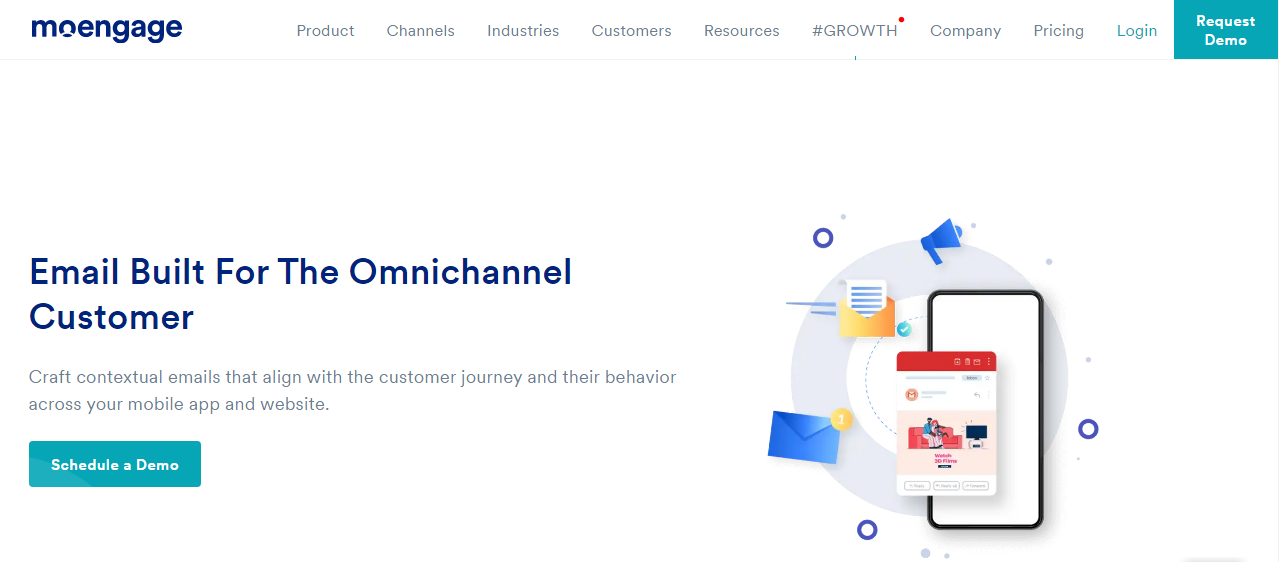
Before you finalize your choice, ensure that the features provided by the service are in line with your needs. For example, if you only want an easy-to-use service that lets you set up drip campaigns for every segment, trigger emails based on the customer’s events, and even recommend personalized content or products based on the customer’s transaction history to improve CLTV.
Segmenting Your Email List
Segmenting your email list is a necessary process that categorizes your subscribers according to specific criteria so that you can send them more targeted emails. This helps you send highly relevant emails to subscribers interested in that particular offering, leading to higher conversions.
Segmenting your email list can improve your open rates, enhance clickthrough rates, and reduce unsubscribe rates. You can also engage segments with autoresponders, an automated series of emails, to nurture prospects and convert them. Based on your marketing intent, you can segment your lists according to the following:
- New subscribers: You can send new subscribers to your platform a series of emails welcoming them.
- Preferences: Subscribers can be segmented based on their preferences.
- Open rate: You can send emails to your more loyal subscribers with custom offers.
- Inactivity: Send emails to subscribers that have been inactive for a while.
- Cart abandonment: Remind subscribers that have not checked out their carts yet.
Email segmentation is very powerful. Take Eventful, an event and ticketing site, for example. Eventful kicked its segmentation efforts by a few notches when it wasn’t receiving enough requests by customizing emails according to artists their customers had looked up on their site. An algorithm they developed also allowed them to suggest artists to consumers based on their genre preferences and other factors.

|
These recommendations were then included in an email newsletter, which set the basis for a new product called Recommended Performer Alerts. They used this new product to appeal to inactive subscribers and attained a 400% rise in reactivation rates.
While the benefits of proper segmentation are easily visible, one issue you can face while adopting this strategy does not have the option to categorize freely. Ineffective segmentation can quash your plan due to minimal classification options and unsophisticated tools.
Knowing how to segment your customer base and successfully managing to do so can bring immense improvements to your marketing plan. Take Vedantu, an online tutoring platform, for example. It countered low engagement from its customer base by employing the customer engagement platform, MoEngage.
MoEngage allows you to group customers based on many categories, analyze custom data, and even use its predictive algorithm to gain ideal segments. Through MoEngage’s segmentation flexibility and in-depth analytics assessment, Vedantu was able to increase its push delivery rates by 12% and adoption and engagement by 6%.
Email Marketing Best Practices
To make planning easier, here are a few email engagement best practices for you to consider while creating a strategy for your email marketing campaign.
1. Define Your Target Audience
Before you can begin selling, it’s essential to have an idea of who your audience is so that you can engage with them. With your chosen ESP, you can categorize customers among your audience to send them particular emails to boost engagement and achieve higher RoI.
For instance, say you have a travel agency, and you’re trying to secure customers for your packages. For your honeymoon package, you will probably engage consumers in their late 20s to early 30s, not university students, right? So, by settling on this specific group of consumers, you can focus your marketing budget and brand message on this group that is more likely to buy from you than other groups.
2. Identify Signup Sources
Often, the most priceless data your sign-up form can offer is from where subscribers sign up for your email list. This information can give you a better idea of engaging them and directing your marketing efforts.
By analyzing your traffic sources and session details, you will be able to identify how active your customers are with your brand and how effective each campaign is. With adequate analytical data procured by your tool, you can tweak your marketing strategy to ensure that your efforts are spent on the customers and campaigns that bring forward fruitful results.
3. Design Your Emails
In an age where consumers are inundated with several emails, the best chance you have to have your emails opened is to send emails that are a cut above the rest. According to a study, 90% of the information retained by humans is visual.
 |
This means that your customers will respond better to designs with visuals in more significant proportion to text. The wireframes depicted above are a great place to start to design emails with excellent designs.
If you’re looking for a more advanced, hassle-free alternative, tools with features like MoEngage’s drag-and-drop editor offer several design options to create the perfect email.
4. Establish Sending Frequency
One golden rule of email marketing is never to flood your customers’ inboxes; otherwise, they will likely unsubscribe from your mailing list. Decide your email send frequency and ensure never to exceed it. Make sure to keep checking the unsubscribe and clickthrough rates, and adjust your sending frequency if required.
5. Test Your Emails
Email marketing is dynamic, so you can’t rest on your laurels. It is so essential a practice that 31% of brands reportedly test their emails to see how well they fare.
You will derive the best results from your campaign by regularly testing your emails’ effects and optimizing them to find what works with your audience. Trying your emails is also simple today, with most major ESP(s) containing features enabling you to conduct A/B tests and monitor results to find the winning formula.
Sherpa, an AI-based content optimization tool, can test your emails by registering customer interactions and automatically directing traffic to high-performing content. Case in point, the multi-bank payments app, Chillr ran an A/B testing campaign using Sherpa and experienced more than 21% CTR improvement.
How to Improve Your Email Open Rates
Your email open rate is one of the most critical metrics of your email marketing campaign. Below are a few measures you can take to ensure a higher open rate of your emails.
1. Steer Clear Of Spam Filters
The most obvious and frustrating problem as a marketer is to have your emails end up in the subscriber’s spam folder. To avoid falling into the spam trap, ensure to:
- establish your IP address’ sending reputation by gradually increasing the number of emails you send every day
- use dedicated IP addresses instead of a shared pool of IP addresses to route emails
- confirm domain existence so that the customer isn’t shown an error upon visiting the link(s) in your emails
- show your recipients how to whitelist your emails
- update your email list periodically to avoid sending emails to non-functional email addresses
- provide valuable and easy-to-consume that enriches
- offer customers the option to unsubscribe from your mailing list
2. Exclude Inactive Subscribers
You must keep revising your email subscriber list consistently, so it doesn’t go stale. Keep reviewing your subscriber list periodically and remove any subscribers who haven’t been active for the past six months or more.
One more way to revise your list is to request your subscribers to update their data and preferences every once in a while. This practice helps boost engagement by reminding the subscriber that they are in control of how they wish to engage with you.
3. Perfect Your Timing
The timing of your email send(s) can hugely impact your open rate and conversion rate. For this reason, you must be doubly sure when you send your emails. If you are wondering when to send emails to achieve the highest open and conversion rate, a study by Yes Marketing found out that Fridays are best for open rates and Saturdays are best for conversions.
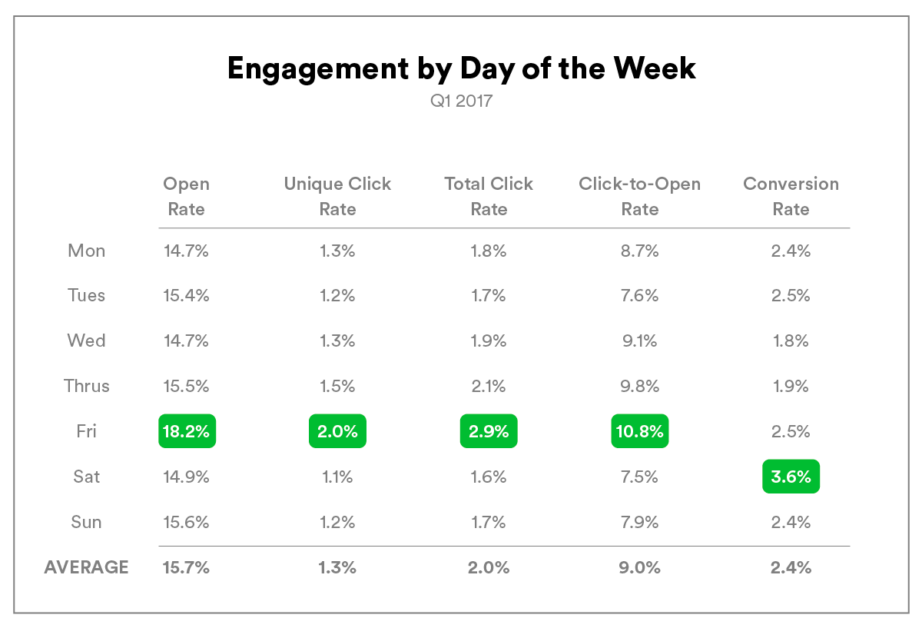
|
However, you shouldn’t simply stick to the results of the study. To find out the best time to send emails, perform A/B tests to identify which time frame gives you the best results is better.
Guide to Email Marketing Automation
Now that you know how to create emails with high open rates, you are ready to learn how to automate the entire process with autoresponders. An autoresponder is a series of emails sent to relevant subscriber segments when they trigger specific events, such as joining your email list, buying a product, downloading a PDF, etc. To create a highly efficient autoresponder, follow the steps below:
1. Choose Your Autoresponder’s Goal
While autoresponder goals can vary according to your objectives, there are four that are particularly common, namely:
Send a welcome sequence to new subscribers: This is the series of emails you send consumers as soon as they subscribe to your email list. It usually redirects to a lead magnet link, a message thanking them for subscribing, and a CTA.
Utilize it as a lead magnet: An autoresponder series can also be used as a lead magnet. You can deliver free and valuable content periodically to customers over several days or weeks.
Make sales automated: You can also build a sales funnel from an autoresponder sequence. This sequence could comprise sales videos, product videos, and follow-up(s) to sell your products.
Promote cross-sells and up-sells: An autoresponder sequence can be set up for upselling and cross-selling products. Depending on the products your customers purchase from you, you can show them “frequently bought items” and send them new offers.
2. Choreograph Your Email Sequence
In this step, you will draft an outline for your sequence by figuring out the length of your sequence and the duration between two email sends. You will also have to strike a healthy balance between your sales and value emails. To keep things simple, use the 80/20 rule, where 80% of your emails provide value, and 20% are used to make a sale.
3. Compose a Highly Effective Autoresponder Series
The hardest part of this process could be composing an autoresponder series that converts. Even so, you can follow the steps below while writing the autoresponder series:
- Focus on the reader’s needs
- Employ personalization techniques
- Write compelling subject lines
4. Supervise Results and Improve
While autoresponders make your life easy, it’d be a fool’s errand to create them and not monitor their results. To achieve the best results, monitor the essential email metrics, such as open rates, clickthrough rates, and unsubscribe rates, to check the performance of your emails and find areas for improvement.
Ultimate Email Marketing Guide Summary
We hope this email marketing guide has taught you how to create and run a highly efficient email marketing campaign. Always bear the fact that you are a guest in your recipients’ inboxes in your mind.
Ensure that your subscribers have opted into your list before you start mailing them. Fulfill your promises to your subscribers and always provide high-value content that aligns with your customers’ expectations consistently.
Finally, make sure to periodically analyze the results of your email marketing campaign and make improvements to your marketing strategies if needed.
Here’s What You Can Read Next |
